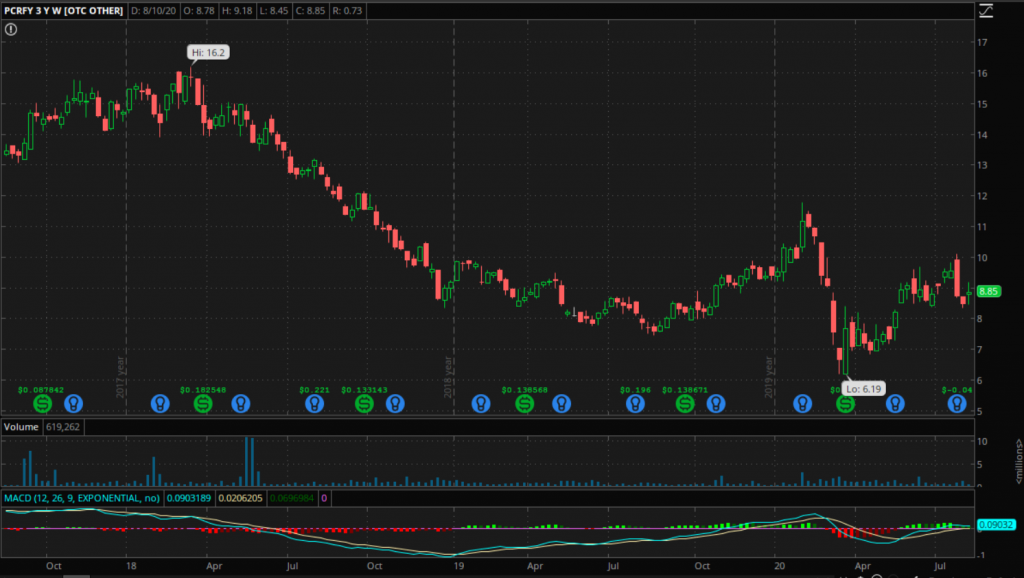Batteries Are Gaining in Importance: Here's Two Stocks to Play that Trend
As many of you will be aware if you have been paying attention, I am not one of those who maintain that the end is nigh for fossil fuels. I have been hearing talk of “peak oil” and the end of oil as a fuel for nearly forty years and yet it is still with us. Still, the fact remains that so called “alternative” energy sources are becoming more mainstream with every passing day.
Things like solar and wind power are responsible for an increasing percentage of total energy production. IEA data shows that in 2019, 27% of the world’s power was generated rom renewable sources and that number is expected to grow to around 50% by 2030.
Wind and solar power, however, have a common problem. Both produce intermittent generation. The sun doesn’t shine for 24 hours a day, nor does the wind blow enough to turn a turbine every day. That means that one of the keys to the expansion of those power sources is storage.
There have been some innovative approaches to that problem. A few years ago, for example, I learned of a Canadian company that was developing giant balloons that would be placed under offshore wind turbines. The idea was that some of the power generated when the wind was blowing would be used to inflate them. Then, when the wind stopped, that air would be released, using the water pressure to force it through a turbine that would generate electricity and maintain a constant flow of power.
That fascinates me, and it is still a possibility, even on land. There are problems, though, and you can read more about it here. The linked-to article concludes, as I did a couple of years ago, that the technology is currently too expensive and cumbersome to be used on a commercial scale.
The more likely solution, therefore, is going to be some kind of more conventional battery, which is why, from a long-term perspective, investing in battery specialists can be seen as an indirect play on the rise of wind and solar power generation. I am not talking about AAs that you find in a grocery store here, but batteries with commercial applications, including lithium ion batteries used in electric vehicles (EVs).
There are two names, one well known, the other more obscure, that can be used to invest in that area.
Panasonic (PCRFY): The better known of the two is Panasonic. The Japanese electronics company is probably best known for its home appliances but has made several moves into batteries in recent years, the most recent of which was a partnership this year with Toyota (TM) to produce batteries for their EVs.
Panasonic owns only 49% of that joint venture, but given that Toyota will be rolling out six new EVs between now and 2025 it should still contribute significantly to the companies bottom line over the next few years. It will also increase their expertise in an area that is already a strong one for them, increasing their chances of dominating the energy storage space as demand increases.

As you can see from the three-year chart above, the stock has been underperforming and is still over twenty percent below its February, pre-pandemic level, so there is still plenty of upside, even in the short-term.
Murata Manufacturing (MRAAF): Murata may not be as well-known as Panasonic, but their stock has done a little better over the last three years…

It has been volatile but has been strong recently and has gained back all of the Covid-related losses.
That makes sense because in many ways, the future for Murata looks bright. They are essentially a company that manufactures electronic capacitors, but they too have an association with a Japanese company that is a household name, having bought Sony (SNE)’s battery division a few years ago. They have since set about increasing overseas production and researching battery applications beyond the obvious.
They don’t have the advantageous position that Panasonic has in the EV space, but then nor do they have a struggling appliance business, and, as the stock’s performance over the last few months suggests, are doing well with their existing product lines.
As the energy landscape changes, batteries are going to take on an increasingly prominent role. At some point, they may, I guess be overtaken by giant balloons or some other technology yet to be invented, but for now they are still the best available answer to the storage problems inherent in the alternative energy sources that are dominating the shift to renewables.
Neither Panasonic nor Murata are pure plays on the battery boom, but both are poised to benefit from that long-range trend, so you should consider adding them to give some some battery power to your portfolio.
Cheers,

